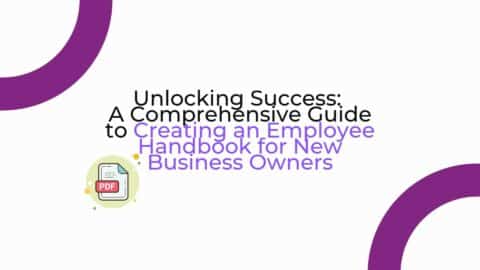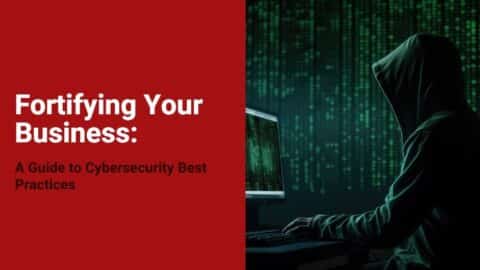Key Steps in Organizing Your Insider Threat Defense
The increasingly digital world that we live in means that organizations in all industries need to build security teams and implement cybersecurity measures and practices against insider threat. Protecting your business against threats from both within and without is a serious undertaking that requires effort from everyone at every level of the organization. Much of cybersecurity is focused on external threats to organizations, which is certainly a pressing concern for any business looking to protect its data, but internal threats can be just as dangerous to an enterprise, if not more so. Protecting against insider threats is not a simple one-and-done solution, but building up a sufficient defense is possible with the right tools and education.
Table of Contents
Defining Insider Threats
Insider threats are diverse and can arise from a variety of causes. Understanding the types of insider threats and what motivates them is an important step on the way to preventing them from damaging your organization. While bad actors outside of your company have arsenals of tools at their disposal to steal, destroy, or otherwise compromise vital assets and resources, insiders have the capacity to do immense damage without even trying or meaning to. There are three main ways that insiders. Employees, contractors, partners, and anyone else with authorized access to any part of your organization – can threaten your data and assets.
- Malicious insiders are likely where your mind goes when you think about insider threats: people who, often for financial gain or personal reasons, deliberately cause damage from within the organization. This can mean disgruntled employees stealing data on their way out and selling it to competitors or criminals, as well as corporate whistleblowers.
- Negligent insiders are likely employees or contractors who, due to ignorance of security practices or lack of care, inadvertently harm the organization.
- Credential thieves are outsiders who use phishing or hacking to gain access to an insider’s account and then use that access to harm the organization.
- Compromised Credentials. If an insider’s credentials (e.g., username and password) are compromised, either through hacking or social engineering techniques, malicious actors can gain unauthorized access to systems and carry out harmful activities.
- Unauthorized Access. Insiders may abuse their legitimate access privileges to view, modify, or steal sensitive information beyond their authorized scope, potentially leading to data breaches or intellectual property theft.
- Data Exfiltration. Insiders might attempt to exfiltrate valuable data from an organization, either for personal gain or to sell it to external parties, posing a significant risk to the organization’s intellectual property and competitive advantage.

Assessing the Risk
It is important for any company’s security team to understand what is truly at stake in an insider threat incident. According to the Ponemon Institute’s Cost of Insider Threats Report, credential theft is the most costly type of insider threat per incident, whereas employee or contractor negligence, being far more common, is the most costly overall. All three types of insider threats, however, cost millions of dollars annually. This includes the costs of disruption, technology, labor, and revenue losses incurred as the result of an insider threat. In the end, it is far preferable to get in front of threats and prevent them than to wait to remediate them after they happen.
Beyond knowing what’s at risk in the event of a breach, it is also vital for security teams to be aware of where their data is stored, who has access to which areas of the network, and what assets are most sensitive and at risk. The United States Cybersecurity and Infrastructure Security Agency’s Insider Threat Mitigation Guide details the fundamentals of an effective insider threat mitigation program, citing the identification of critical assets and data and monitoring of user behavior as two important steps. Without adequate knowledge and documentation of valuable data and user activity, the risk of insider threats cannot be properly understood, let alone prevented.
Protecting Your Organization By Insider Threat Defense
Setting up a security plan to protect against insider threats means approaching the issue from several angles. Just as internal threats come from several causes. One facet to address involves implementing and enforcing general cybersecurity measures and practices. It can protect against many kinds of threats. Ensuring that each insider is allowed access only to areas and assets. These are necessary for their job means fewer people capable of leaking critical data. Either intentionally or unintentionally. Training employees in cyber hygiene and recognizing scam attempts can prevent accidental breaches due to credential theft or employee negligence as well.
When it comes to more specific solutions to prevent insider threats from occurring, there are many tools available for organizations to use. Because insider risks often circumvent traditional threat prevention measures. And a security solution for insider threats should use detection. So identification methods that are more effective for the purpose of aiding organizations to “detect, investigate, and respond to insider threats to their data.” Each insider threat mitigation tool has its pros and cons. And each organization has different needs and preferences. So it is important for security officers and teams to assess what option works best.
Conclusion
While it may feel daunting to have to face threats from within your organization as well as without, it is, unfortunately, an issue that demands attention. A company can incur serious damages due to the purposeful or accidental action or inaction of any insider. And prevention is far less costly than remediation. Protecting your business against insider threats requires layered and robust security. And it should account for each type of insider risk in some way. Knowing where the danger lies and what exactly is at risk is crucial as a foundation upon which to build an effective defense. And there are solutions and tools to help businesses detect and mitigate the threat.

PJ Bradley is a writer on a wide variety of topics, passionate about learning and helping people above all else. Holding a bachelor’s degree from Oakland University, PJ enjoys using a lifelong desire to understand how things work to write about subjects that inspire interest. Most of PJ’s free time is spent reading and writing. PJ is also a regular writer at Bora.










